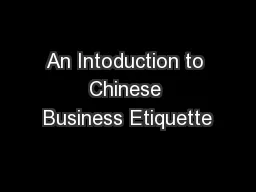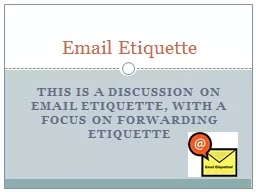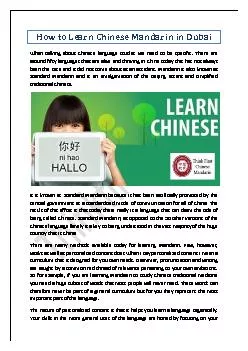PPT-An Intoduction to Chinese Business Etiquette
Author : pamella-moone | Published Date : 2017-11-10
May 16 2013 Zagreb Professor Yan L idong Chinese director of Confucius Institute at University of Zagreb C ontact jimmy4401sinacom We are different but live in
Presentation Embed Code
Download Presentation
Download Presentation The PPT/PDF document "An Intoduction to Chinese Business Etiqu..." is the property of its rightful owner. Permission is granted to download and print the materials on this website for personal, non-commercial use only, and to display it on your personal computer provided you do not modify the materials and that you retain all copyright notices contained in the materials. By downloading content from our website, you accept the terms of this agreement.
An Intoduction to Chinese Business Etiquette: Transcript
Download Rules Of Document
"An Intoduction to Chinese Business Etiquette"The content belongs to its owner. You may download and print it for personal use, without modification, and keep all copyright notices. By downloading, you agree to these terms.
Related Documents














